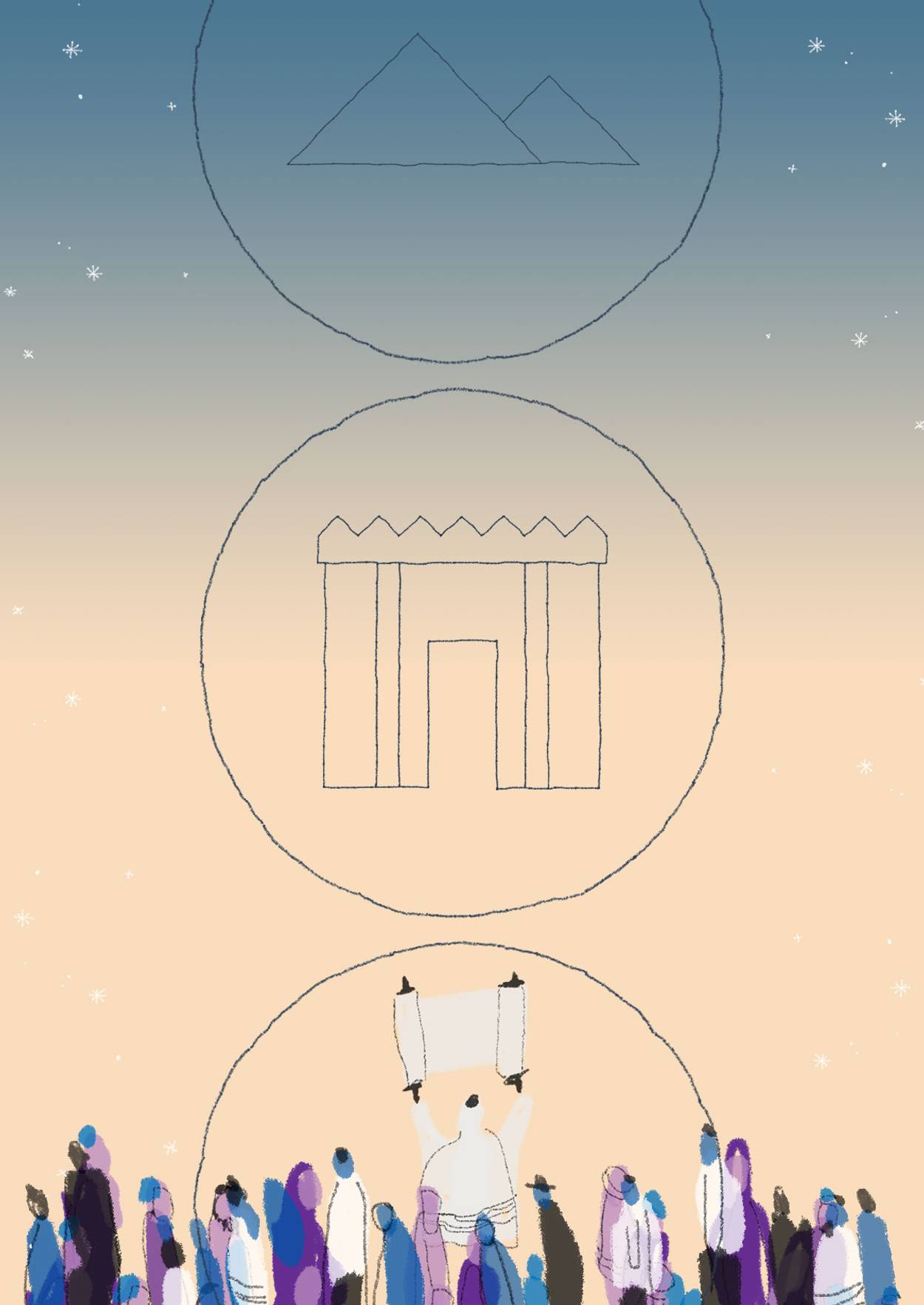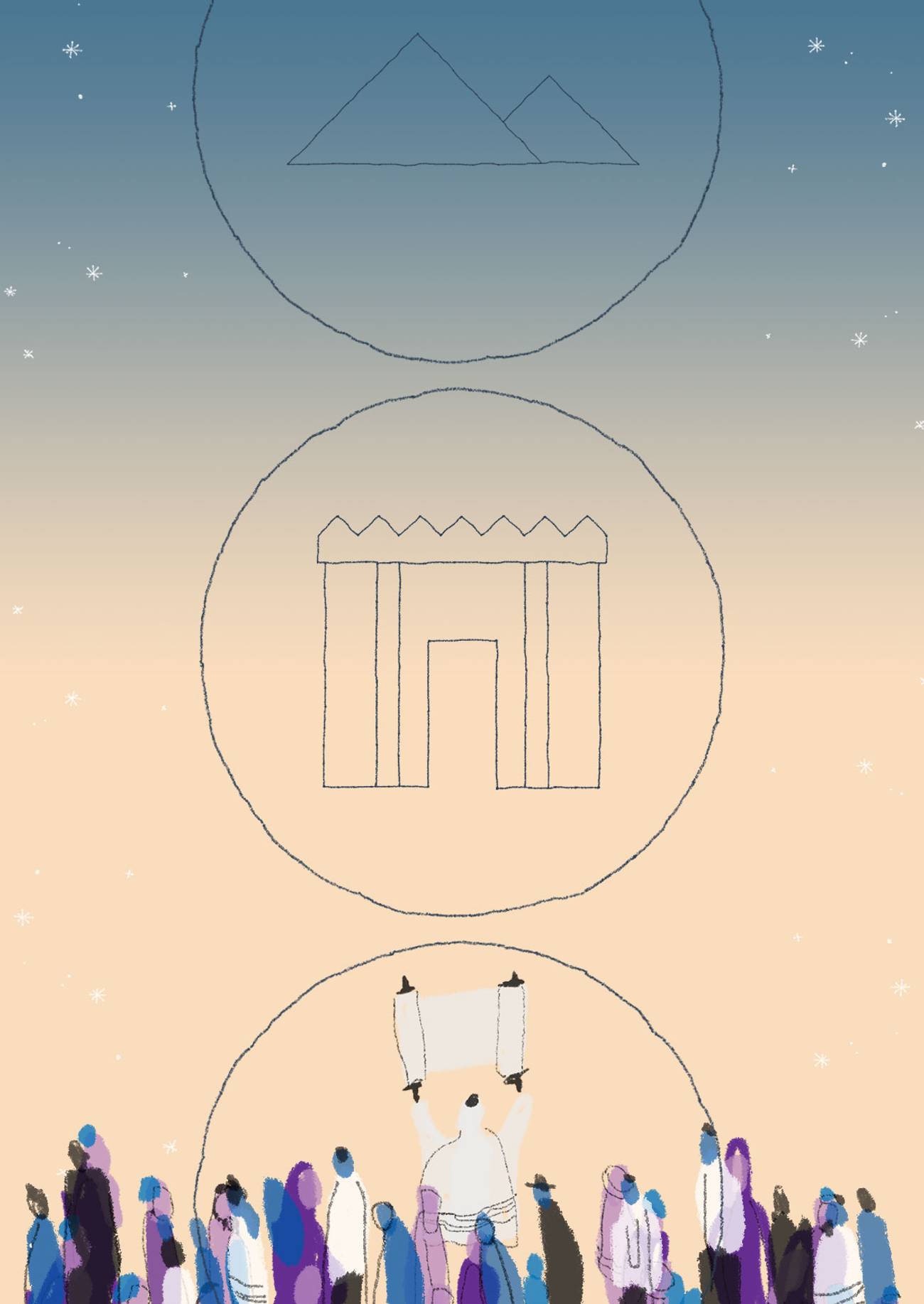The Way-Forward Machine
If we want to plan millennia ahead, we should ask how Jews have always done it




In the tech and business worlds, long-term thinking—and I mean really long-term thinking—is having a moment. Frustrated by humankind’s tendency to look at problems, from climate change to artificial intelligence, only for a handful of years into the future, geekdom is pushing back. The Bay Area is home to the Long Now Foundation (where I am a research fellow), which aims to promote long-term thinking, as exemplified by its flagship project, 10,000 Year Clock: a clock constructed inside a mountain in Western Texas, designed to last for 10,000 years. The Long-Term Stock Exchange launched last year in order to push back against the short-termism so rampant in the business world; it works to promote long-term value creation by companies. And there is a growing number of people in tech-friendly circles focused around the ideas of effective altruism and working to prevent existential risk, examining aspects of the extremely long-term nature of human civilization.
Some have begun to look for inspiration at long-lived institutions, from religious establishments to multigenerational businesses—for example, Kongō Gumi is a Japanese construction company still operating after over 1,400 years and the Ise Jingu Shrine is about 2,000 years old. But there is one conspicuously overlooked group, one “community of practice” that has persisted, with surprising consistency, over millennia: the Jews. If what we’re really interested in is how to plan for millennia hence, why not ask how Judaism has managed to persist in a coherent way, benefiting humanity for millennia? By combining a deep reverence for history and text—one that can be drawn upon in times of catastrophe and rapid change—with the understanding that each generation needn’t be content with just revering the past, Jews have created a distinctive mechanism for creating while also maintaining.
Elsewhere in the ancient world, the plans of the gods were rarely to be questioned or violated by mortals. When a god was defeated or even outsmarted by a human being, very little good could come of this. For example, in ancient Greek mythology, the warrior Diomedes wounded Aphrodite in battle, and she in turn caused his wife to be unfaithful. Sisyphus outwitted the gods numerous times, only to be eternally punished in the afterlife. Divine fate and wisdom were not to be questioned; they were simply to be endured. In the language of long-term planning, there is a divide here between the creator and the maintainer. In this case, the gods articulate a plan, and humans are merely bit players in its execution.
But Judaism provides a different vision. In a famous Talmudic passage, God intervenes in a Halachic dispute, only to be overruled. God’s response? “The Holy One, Blessed be He, smiled and said: ‘My children have triumphed over Me; My children have triumphed over Me.’” Imagination or pushback in the face of the divine might be foreign to other religions, yet not for Judaism. While Ovid wrote of a mythical creature—the Ophiotaurus—whose entrails, if burnt, provide for the rather obscure means of defeating a god, Judaism provides a much more straightforward path: Just be good at thinking about the Jewish texts and their relationship to the world. Each generation might be tied to a tradition, but it is a tradition that is made one’s own.
When we think about building something for the long term, most long-term thinking involves a burst of creation at the beginning, followed by maintenance, whether it’s for large-scale construction projects or long-lived institutions. While caretaking is far from a bad thing, future generations can be locked into the vision of those who have come before them, and are denied a certain amount of agency. And if the choice is simply maintainer or creator, too many of us are going to choose to build the new, rather than preserve the old. That’s simply what our modern age prizes: novelty. There have been attempts to rekindle the excitement at maintenance, such as with the group The Maintainers, a research community focused on the repair and maintenance of infrastructure. It’s a sympathy I share. But, by and large, people would far prefer to create the new than be a caretaker to the old. However, Judaism recognizes that this is a false dichotomy; it provides for a certain amount of innovation for each generation, a balance of the creative and the caretaker.
Among many topics that his slim yet thought-provoking volume covers, Micah Goodman’s book The Wondering Jew examines the nature of change within Jewish tradition. This change is part of an intergenerational conversation, one that blends Halachic innovation and examining the past. Referencing the work of Amos Oz and Fania Oz-Salzberger, Goodman describes Judaism as “a civilization of words,” but one that draws from this past and brings it into the future. As Goodman notes, the Talmud recognizes that when it comes to interpretation of the tradition there is neither primacy of God over humanity, nor the past over the present. All perspectives play a role in how the Jewish people adapts to the change around us.
This approach is seen most clearly in the modern streams of Judaism that strive to ensure that the timeless concepts of the Jewish people are in consonance with our modern sensibilities. However, this tendency is by no means new, for even the Talmudic sages insisted that “an eye for an eye” could not mean corporal punishment, and was viewed as referring to monetary damages. The Jewish view is one of cooperation across time: Each generation works together to build and renew the compact and vision that has been laid out for them. This balance between recognizing the sanctity and importance of the individual and recognizing that they are part of something larger than themselves, something steeped in history and memory, might very well be the key to long-term resilience and continuity.
This framework also allows for astonishing adaptability: When we have so many stories retold over the generations, and texts preserved across the millennia, it is not so difficult to mine this archaeological tell of Jewish literature to deal with new problems. What does Judaism have to say about lab-grown meat? Plumbing the depths of Jewish literature, we find multiple relevant Aggadic tales from the Talmud, whether it’s the creation of a golemlike animal, or meat that has descended from heaven. These stories can be interpreted through the lens of modern science for insight. What about SETI and intelligent life in the stars? Again, there is a curious reference in the Talmud to 18,000 worlds, as well as what might be an elliptical mention of alien life in the Song of Deborah in the Book of Judges. From the approaches of Ahad Ha’am to Mordecai Kaplan, no matter the societal or technological innovation, our tradition is flexible and rich enough to make it our own.
This dependence on memory also allows the Jewish people to handle the unexpected black swan events of history. Computer models of natural disasters for insurance purposes are run over the course of at least a simulated 10,000 years for a simple reason: Any less and we fail to observe the rare and exceptional. Through its long history, Jewish tradition has provided us the means of hedging against the unexpected, the catastrophes that buffet human societies across the millennia. Jewish law understands how to handle a crop disease or drought (it makes allowances for such situations when it comes to finding a lulav) or a famine (the Talmud discusses avoiding having children during such times) or even an epidemic, with its many responses for how to handle a plague. Judaism even has experience with numerous near-existential risks, including the destruction of the Temple itself. A Passover Seder can be quite different from how things were when the Temple in Jerusalem was around, but we replace certain rituals with a healthy discussion and some symbols on a plate. We adapt.
In fact, the Jewish people has long felt itself to be on the verge of catastrophe. Simon Rawidowicz noted in his essay “Israel: The Ever-Dying People” (1986) that in every generation the Jewish people has not only been concerned about dying out, but often truly felt that they—that very generation—were the last in a long chain. This happened in ancient and medieval times, as well as in modernity. Rawidowicz quoted the 19th-century poet Y.L. Gordon, writing in 1870 (then dying in 1892, four years before Herzl published The Jewish State): “For whom do I labor? Who will tell me the future, who will tell me that I am not the last poet of Zion, and you my last readers?” And yet, each generation continues and persists.
Concern that we are always on the brink of destruction might even provide the Jewish people with additional license for creativity and innovation: If we are to truly survive, does it not require innovation in order to do so? Such concerns fueled the modern Zionist movement and its engagement with a political approach to Jewish survival. Of course, there is an inverse to this concern, which is that when confronted with the threat of destruction, we can too easily drift into cautious caretaker mode and focus only on maintenance. Getting the balance right is tough, seen most clearly in the hand-wringing that ensues around Jewish demography whenever the results of a new survey are released. In the end, though, Judaism’s preservation and engagement with history provide a way of balancing creator and maintainer and allowing for continuity over long stretches of time.
So what would it mean to look to the Jewish nature of long-term thinking for inspiration when it comes to thinking about the persistence and flourishing of organizations more broadly? What can the worlds of business, nonprofits, and technology learn from the Jews in adapting to uncertainty and managing risk, balancing creation and maintenance?
Well, first of all, we can look at mission drift, the idea that an organization shifts away from its founding purpose and goals over time. But rather than viewing mission drift as a terrible thing to be defeated, we can recognize it as the natural way of things. Slow incremental change, rather than the hubristic folly of an initial plan that must be followed for all time, allows for adaptation in the face of new and changing circumstances. Surprise can be embraced as opposed to something that must be overcome. Slippage is OK. And even more so, it allows each of us to combine the caretaker and the creator within ourselves.
Similarly, we must widen our focus when it comes to looking at historical parallels for our organizations. Don’t simply look to what happened a decade earlier, or even a century before. Be inspired by the catastrophe modeling perspective and think over the course of millennia, combing through history for examples that can be mined. The Dalai Lama did this when looking to the Jews in order to understand how to survive in a diaspora. Too many of us are obsessed with novelty as a litmus test for quality, but that needn’t be so. We reread the Passover Haggadah year after year, mining its depths for new insights and ideas, rather than dispensing with this text that has its origins 2,000 years ago.
The Jewish people has lacked any persistent home for much of its history, but it has lasted. If we want to build organizations and companies that can last and adapt to an ever-changing world, we should take lessons from Judaism: A People of the Book is an organization built for the long term, able to thrive in a wide-open future.
Samuel Arbesman is Scientist in Residence at Lux Capital. He is the author of The Half-Life of Facts and Overcomplicated. He is also a Research Fellow at the Long Now Foundation and a Senior Fellow at the Silicon Flatirons Center at the University of Colorado Boulder.